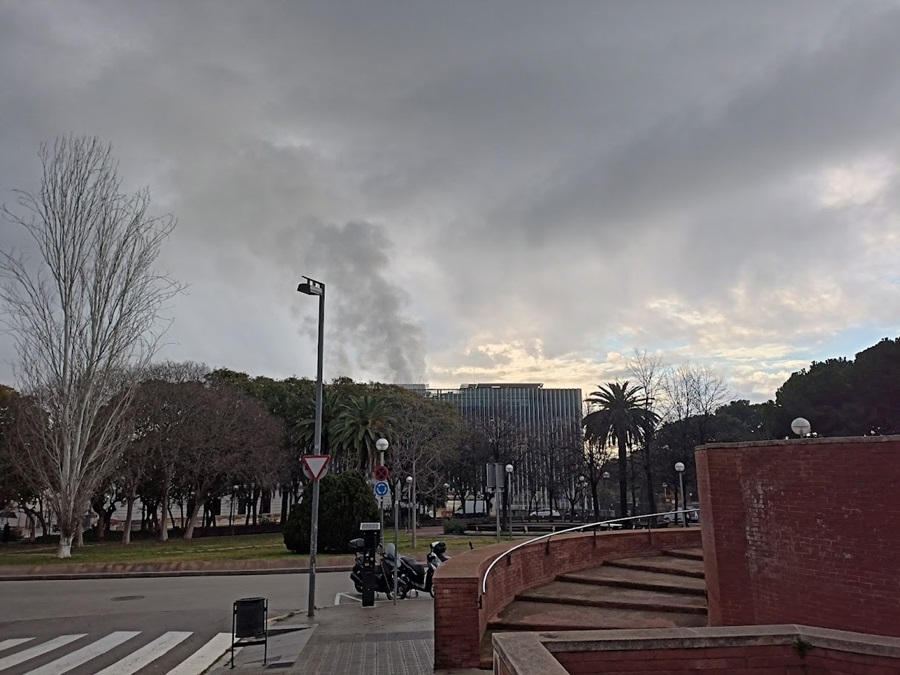- Artificial intelligenceTechnology
- 4 de March de 2025
- No Comment
- 9 minutes read
AI Cartography

AI Cartography

What Educators Must Address About Artificial Intelligence

The Mobile World Congress (MWC) in Barcelona 2025 once again establishes itself as the grand neoliberal theatre of technology. Amidst dazzling lights, grandiose presentations, and rhetoric swinging between unbridled optimism and promises of imminent revolutions, the event faithfully mirrors the dynamics of the global tech industry. It undeniably provides an economic boost to Barcelona — and an excuse to clear the poor from the sightlines of executives, lest their presence unsettle the spectacle. For behind the gleaming showcase of innovations, critical questions scarcely find room in official or media narratives.
One of the most glaring omissions in the MWC discourse is the environmental impact of artificial intelligence (AI). This absence is particularly striking given the recent emergence of purportedly more “sustainable” and open-source generative AI alternatives — such as the new DeepSeek models unveiled earlier this year — which might have prompted the tech industry to reconsider its extractive and destructive practices. Not out of moral or ethical conviction, but spurred by the plummeting stock prices of certain companies.
Kate Crawford had already laid bare this issue in her “Atlas of AI” (2021), dismantling the myth of AI’s immateriality by exposing its energy demands, its entanglement with resource extraction, and the social inequalities it sustains — often with human exploitation lurking just out of sight. Similarly, Taller Estampa — recently awarded the Premio Ciutat de Barcelona de Cultura Digital— has underscored the urgency of mapping AI from a critical perspective through its “Cartografia de la IA Generativa” project. This work offers an essential counterpoint to the global dynamics of the MWC. Such perspectives are not only crucial for understanding technological development beyond corporate marketing but also for informing how AI is taught.
The inevitable question arises: what should educators truly be teaching about AI in the classroom? In light of the principles outlined in the Declaración de Barcelona sobre el uso adecuado de la IA (2017) and the guidelines of organisations like the OEIAC (Observatory of Ethics in Artificial Intelligence of Catalonia) and la UNESCO, AI education cannot be confined to programming algorithms or using generative AI tools in class. We urgently need a critical technological education that situates AI within its political, social, ethical, and environmental contexts.
MWC and Uncritical AI: Technology as Spectacle
The MWC epitomises a technology turned spectacle, where AI is portrayed as an unstoppable force of progress. It is a media-driven, corporate AI. Rarely does it confront, for instance, that training a generative AI model can consume as much energy as 125 households in a year, or that the data mining required for these systems relies on infrastructure that exacerbates the climate crisis and exploits people in impoverished countries — those perpetually trapped by imposed debt while their mineral and energy resources are stripped away. The very same resources, incidentally, that Trump has sought from Ukraine for the USA in exchange for military support. This is no coincidence. AI is not just code: it is water to cool servers, lithium and rare earth minerals extracted under unsafe working conditions, and a concentration of power in the hands of a few. It fosters polarisation: wealth for the few, poverty for the many.
Taller Estampa has illuminated these hidden costs in its su “Cartografía de la IA Generativa”. It is an open project, available in multiple languages, that vividly demonstrates how digital infrastructures have concrete geographies and tangible consequences for the economy, ecology, and politics — for people. Some paths on the map are undeniably bleak.
In this context, educators’ work cannot be limited to technological literacy in a narrow technical sense. We also need a critical education that empowers students to understand how AI operates socially and whose interests it serves. While mobile phones may be banned in schools, students will use them beyond the classroom. We must encourage reflection on their use, misuse, and, regrettably, their addictive potential. Just as crucially, they must consider the consequences — for themselves, for others, and for the planet.
Ethics and AI Education
From the Barcelona Declaration to UNESCO’s principles, the call for ethical AI is not a mere abstract aspiration but a pedagogical imperative. Since Mario Bunge’s renowned Haifa conference (1974), the need to integrate techno-ethics into education has been clear. The risks and responsibilities of algorithmic development must be confronted. This is not just about technical training; it is about equipping students to make informed decisions and to demand more transparent technologies and more accountable creators, scientists, and users.
Key topics to tackle in the classroom include:
- Environmental impact: understanding AI as part of an extractive economy — not only of data but also of water and energy.
- Algorithmic biases: examining how training data can reinforce inequalities tied to gender, race, or class.
- Digital rights: investigating AI’s role in surveillance capitalism, its effects on privacy, and the automation of decision-making.
- The global socio-political economy of AI: debating who profits from AI, whose interests it advances, its social repercussions, and how it fuels global conflicts — as well as exploring alternative, socially-driven AI models.
- Regulation and applied ethics: analysing emerging legislation, its influence on technological development, and strategies to dismantle the false myths surrounding technology, as philosopher Antonio Diéguez urges.
Given this intricate global landscape, didactics of technology is not just crucial — it is an urgent necessity. Whether integrated into specific subjects or approached through tutorial action, this pedagogy must foster critical thinking and support students in developing a deep understanding of AI’s societal impact. As global citizens, they cannot avoid grappling with these issues.
The MWC 2025 reaffirms the need for an education that does not merely celebrate innovation but also interrogates its consequences. Taller Estampa’s Cartografia de la IA Generativa and Kate Crawford’s prescient critiques remind us that technology is neither neutral nor autonomous; its development comes with costs that must be acknowledged and regulated. Citizens must have the agency to intervene. For educators, this means embracing both a challenge and a duty: to equip their students to comprehend, question, and actively shape the future of AI — and other technologies — rooted in critical knowledge and social justice.
___
AI Cartography: file:///C:/Users/evase/Downloads/cartografia%20(1).svg
Source: educational EVIDENCE
Rights: Creative Commons

